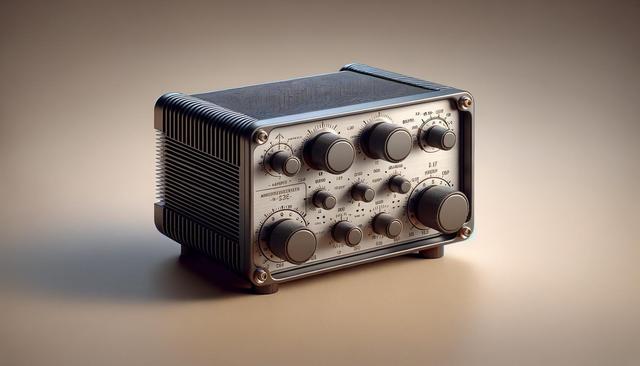Understanding Isolated Amplifiers in Current Shunt Measurement
An isolated amplifier plays a critical role in current shunt measurement systems, particularly where electrical safety and signal integrity are paramount. These devices are designed to accurately measure the small voltage drop across a shunt resistor, which is directly proportional to the current flowing through a circuit. The isolation barrier within the amplifier ensures that the measured signal is electrically separated from the rest of the system, preventing high voltages from affecting sensitive components or endangering users. This isolation is especially important in industrial, automotive, and high-voltage applications where ground loops and transient voltages can distort signals or damage equipment.
In current shunt measurement setups, the goal is to capture precise data without introducing noise or distortion. Isolated amplifiers meet this requirement by offering high common-mode rejection ratios (CMRR), meaning they effectively filter out unwanted signals that are common to both input leads. This makes them ideal for applications where accurate current sensing is essential, such as power monitoring, battery management systems, and motor control circuits.
Advantages of Using Isolated Amplifiers
There are several benefits to integrating isolated amplifiers into current shunt measurement systems. One of the primary advantages is enhanced safety, as the galvanic isolation protects the low-voltage control circuitry from potentially dangerous high-voltage nodes. In addition, these amplifiers improve system reliability by reducing susceptibility to electrical noise and ground potential differences.
Key benefits include:
- Improved signal integrity in noisy environments
- Protection against voltage spikes and ground loops
- Enhanced safety for users and equipment
- Accurate measurement across broad temperature and voltage ranges
These features make isolated amplifiers highly suitable for precision current sensing, especially in environments where performance and safety are equally critical.
Working Principle of Isolated Amplifiers
The core function of an isolated amplifier is to transfer an analog signal from one part of a circuit to another while maintaining electrical isolation. This is typically achieved through magnetic, capacitive, or optical isolation techniques. In current shunt measurements, the amplifier senses the voltage across a low-resistance shunt resistor and transmits the signal across the isolation barrier without direct electrical contact.
Magnetic isolation uses transformers to couple the signal, whereas capacitive and optical approaches rely on electric fields or light, respectively. Each method offers unique advantages in terms of bandwidth, power consumption, and isolation voltage. The selection of the isolation method depends on the application requirements such as:
- Operating voltage range
- Signal bandwidth
- Environmental and mechanical constraints
- Compliance with safety standards
Regardless of the method, the goal is to maintain high fidelity of the measurement signal while ensuring that no harmful voltages can transfer across the isolation barrier.
Design Considerations for Accurate Measurements
Designing a system with an isolated amplifier for current shunt measurement involves several critical factors. First, the choice of shunt resistor is vital. It must have low resistance to minimize power loss but high enough to produce a measurable voltage. The resistor’s tolerance, temperature coefficient, and power rating all influence the accuracy of the current measurement.
Next, amplifier specifications such as input offset voltage, gain error, and linearity should be carefully evaluated. The amplifier’s input impedance also needs to be significantly higher than the shunt resistor to prevent loading effects. Additional considerations include:
- Power supply isolation and regulation
- PCB layout to minimize noise coupling
- Shielding and filtering to reduce electromagnetic interference
- Temperature compensation techniques
By addressing these design aspects, engineers can ensure that their measurement systems deliver accurate and stable readings across varying operating conditions.
Applications Across Industries
Isolated amplifiers are used in a wide range of industries where precise current measurement and electrical isolation are essential. In renewable energy systems, such as solar inverters and wind turbines, they help monitor power flow and protect sensitive control electronics. In electric vehicles, isolated amplifiers support battery management and motor control by providing real-time current data while withstanding harsh electrical environments.
Industrial automation is another key area where these components are indispensable. Equipment like programmable logic controllers (PLCs), servo drives, and power supplies benefit from isolated current sensing that enhances performance and maintains safety standards. Common use cases include:
- Monitoring load currents in power distribution units
- Overcurrent protection in motor drives
- Energy usage tracking in smart meters
- Condition monitoring in predictive maintenance systems
Across these applications, the combination of accurate measurements and electrical isolation makes isolated amplifiers a valuable component in modern electronic designs.
Conclusion: Enhancing Measurement Accuracy While Ensuring System Safety
Incorporating an isolated amplifier into current shunt measurement systems offers a balanced solution for achieving both precision and protection. These amplifiers enable reliable current sensing by eliminating electrical interference and maintaining system isolation, which is crucial in high-voltage or noisy environments. Engineers across industries—from automotive and energy to industrial automation—rely on this technology to ensure the safety, accuracy, and performance of their systems. By understanding the operational principles and design considerations, professionals can effectively deploy isolated amplifiers to meet stringent measurement and safety standards.




Leave a Reply